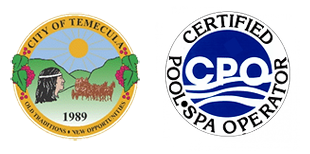Filter Cleaning
Filter Cleaning Experts in Temecula, CA

Temecula's Premier Pool Filter Cleaning Service
Pool Filter Cleaning
Pool Filter Cleaning Temecula



A swimming pool filter is an essential component of any pool, responsible for removing debris, dirt, and other contaminants from the water to keep it clean and clear. Over time, however, the filter can become clogged with dirt and debris, reducing its efficiency and potentially causing damage to the pool’s circulation system. Regular pool filter cleaning is necessary to ensure that the filter is functioning properly and maintaining a safe and healthy swimming environment.
There are three types of pool filters: sand, cartridge, and DE (diatomaceous earth). Each type of filter has its own unique maintenance requirements and cleaning methods.
Sand filters are the most common type of pool filter and are relatively easy to maintain. The filter consists of a tank filled with sand, which traps dirt and debris as the water passes through. Over time, the sand can become clogged with dirt and debris, reducing its efficiency and requiring the filter to be cleaned.
To clean a sand filter, the first step is to turn off the pump and release the pressure by opening the air release valve on the filter. Next, the filter should be backwashed, which involves reversing the flow of water through the filter to flush out the dirt and debris. The backwash process should continue until the water in the sight glass is clear and clean.
After backwashing, the next step is to rinse the filter, which involves running the water through the filter in the normal direction to settle the sand back into place. Once the filter is rinsed, the pump can be turned back on, and the filter should be ready for use.
Cartridge filters are another type of pool filter that requires regular cleaning. The filter consists of a cartridge made of pleated polyester, which traps dirt and debris as the water passes through. Over time, the cartridge can become clogged with dirt and debris, reducing its efficiency and requiring the filter to be cleaned.
To clean a cartridge filter, the first step is to turn off the pump and remove the cartridge from the filter. The cartridge should then be hosed down with a high-pressure hose to remove any dirt and debris. If the cartridge is very dirty, it can be soaked in a filter cleaner solution to help remove stubborn dirt and debris.
Once the cartridge has been cleaned, it should be rinsed thoroughly and allowed to dry before being reinstalled in the filter. It is important to note that cartridges have a lifespan and should be replaced when they become too worn or damaged.
DE (diatomaceous earth) filters are the most complex type of pool filter and require the most maintenance. The filter consists of a tank filled with a powder made from fossilized diatoms, which traps dirt and debris as the water passes through. Over time, the powder can become clogged with dirt and debris, reducing its efficiency and requiring the filter to be cleaned.
To clean a DE filter, the first step is to turn off the pump and release the pressure by opening the air release valve on the filter. Next, the filter should be backwashed, which involves reversing the flow of water through the filter to flush out the dirt and debris.
After backwashing, the next step is to recharge the filter with fresh DE powder. This involves adding the powder to the skimmer, which then distributes the powder evenly throughout the filter. Once the filter is recharged, the pump can be turned back on, and the filter should be ready for use.
In addition to regular cleaning, it is also important to maintain the proper water chemistry in your pool to prevent the filter from becoming clogged with dirt and debris. Water that is too acidic or alkaline can cause the filter to become clogged, reducing its efficiency and requiring more frequent cleaning.
(951) 888-3998


